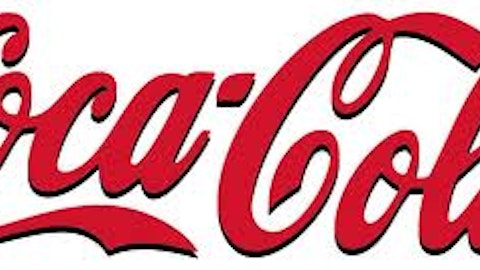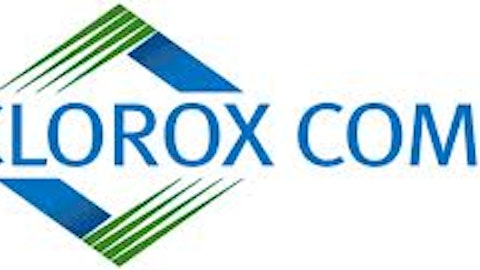As an investor, it pays to follow the cash. If you figure out how a company moves its money, you might eventually find some of that cash flowing into your pockets.
In this series, we’ll highlight four companies in an industry, and compare their “cash king margins” over time, trying to determine which has the greatest likelihood of putting cash back in your pocket. After all, a company can pay dividends and buy back stock only after it’s actually received cash — not just when it books those accounting figments known as “profits.”
Today, let’s look at The Procter & Gamble Company (NYSE:PG) and three of its peers.

The cash king margin
Looking at a company’s cash flow statement can help you determine whether its free cash flow actually backs up its reported profit. Companies that can create 10% or more free cash flow from their revenue can be powerful compounding machines for your portfolio. A sustained high cash king margin can be a good predictor of long-term stock returns.
To find the cash king margin, divide the free cash flow from the cash flow statement by sales:
Cash king margin = Free cash flow / sales
Let’s take McDonald’s Corporation (NYSE:MCD) as an example. In the four quarters ending in December, the restaurateur generated $6.97 billion in operating cash flow. It invested about $3.05 billion in property, plant, and equipment. To calculate free cash flow, subtract McDonald’s investment from its operating cash flow. That leaves us with $3.92 billion in free cash flow, which the company can save for future expenditures or distribute to shareholders.
Taking McDonald’s sales of $25.5 billion over the same period, we can figure that the company has a cash king margin of about 14% — a nice high number. In other words, for every dollar of sales, McDonald’s produces $0.14 in free cash.
Ideally, we’d like to see the cash king margin top 10%. The best blue chips can notch numbers greater than 20%, making them true cash dynamos. But some businesses, including many types of retailing, just can’t sustain such margins.
We’re also looking for companies that can consistently increase their margins over time, which indicates that their competitive position is improving. Erratic swings in margins could signal a deteriorating business, or perhaps some financial skullduggery; you’ll have to dig deeper to discover the reason.
Four companies
Here are the cash king margins for four industry peers over a few periods.
| Company | Cash King Margin (TTM) | 1 Year Ago | 3 Years Ago | 5 Years Ago |
|---|---|---|---|---|
| Procter & Gamble | 12.8% | 11.5% | 18.3% | 15.5% |
| The Clorox Company (NYSE:CLX) | 9.9% | 7.9% | 11.3% | 12.3% |
| Church & Dwight Co., Inc. (NYSE:CHD) | 15.4% | 13.1% | 10.5% | 9.0% |
| Colgate-Palmolive Company (NYSE:CL) | 15.4% | 14.1% | 17.6% | 12.1% |
Source: S&P Capital IQ. TTM = trailing 12 months.
Church & Dwight and Colgate-Palmolive Company (NYSE:CL) have the highest current cash king margins at 15.4%, but while Church & Dwight has offered consistent growth in its margins over the past five years, Colgate-Palmolive Company (NYSE:CL)’s margins have fluctuated. The Procter & Gamble Company (NYSE:PG) also meets our 10% threshold, with a 12.8% margin, and Clorox comes close with 9.9% margins. However, the margins for both are lower than they were five years ago. But The Procter & Gamble Company (NYSE:PG) offers an attractive 2.9% dividend yield, and The Clorox Company (NYSE:CLX) offers an even more attractive 3.1% yield, better than Colgate-Palmolive Company (NYSE:CL)’s 2.4% and Church & Dwight’s 1.8%.
All these companies have solid brands for products consumers rely on, such as toothpaste, laundry soap, and cleaning supplies. Because consumers have a limited ability to cut out these expenses, these companies tend to fare better than others during economic downturns. However, the fact that investors are drawn to these types of stocks during tough times has resulted in valuations that are not as attractive as they used to be. Also, the consumer goods industry doesn’t tend to offer the same massive growth you might see in other areas.
The Procter & Gamble Company (NYSE:PG) has managed to improve productivity and cut costs, which has allowed it to improve its gross margins. Also, in response to pressure from investor Bill Ackman, the company is looking to improve its pipeline of new products. Colgate has taken advantage of its expansion into emerging markets — particularly Latin America — and while its growth there has slowed due to global economic pressures, its wide margins have allowed it to bear the brunt of increased raw materials costs better than some of its competitors. Church & Dwight’s ability to offer both solid growth and growing dividends makes it stand out comparatively. It has also been able to return money to shareholders through stock buybacks. However, Church & Dwight has faced pricing pressure related to its laundry products price war with The Procter & Gamble Company (NYSE:PG), which puts Church & Dwight in a precarious position due to its much smaller size.
The cash king margin can help you find highly profitable businesses, but it should only be the start of your search. The ratio does have its limits, especially for fast-growing small businesses. Many such companies reinvest all of their cash flow into growing the business, leaving them little or no free cash — but that doesn’t necessarily make them poor investments. Conversely, the formula works better for slower-growing blue chips. You’ll need to look closer to determine exactly how a company is using its cash.
Still, if you can cut through the earnings headlines to follow the cash instead, you might be on the path toward seriously great investments.
The article Is Procter & Gamble a Cash King? originally appeared on Fool.com and is written by James Royal.
Jim Royal has no position in any stocks mentioned. The Motley Fool recommends Procter & Gamble.
Copyright © 1995 – 2013 The Motley Fool, LLC. All rights reserved. The Motley Fool has a disclosure policy.

